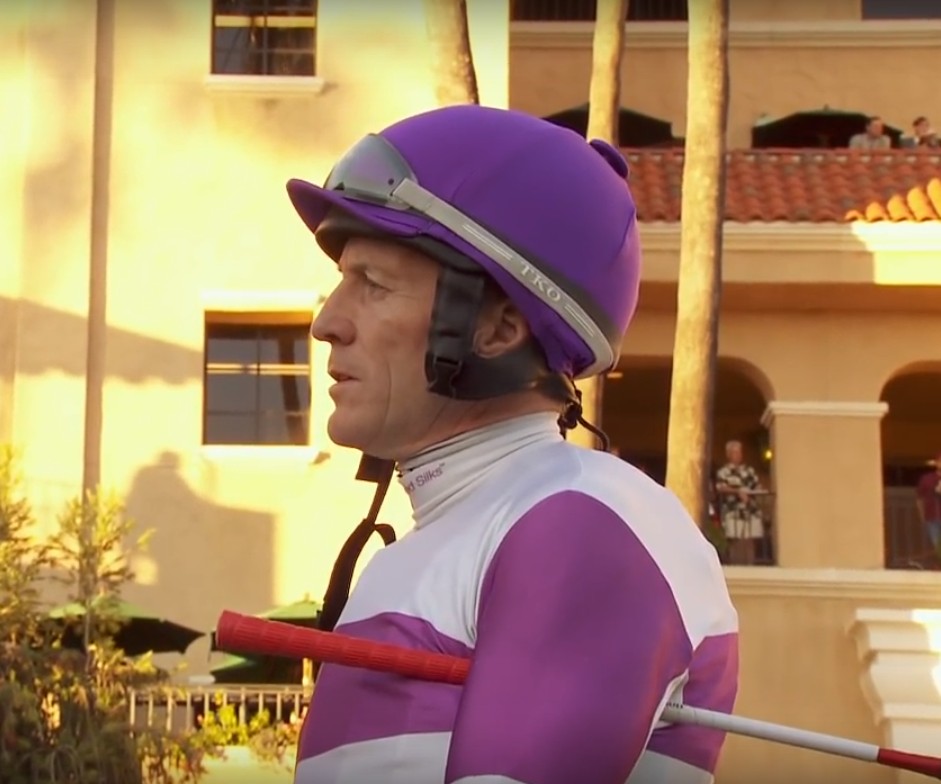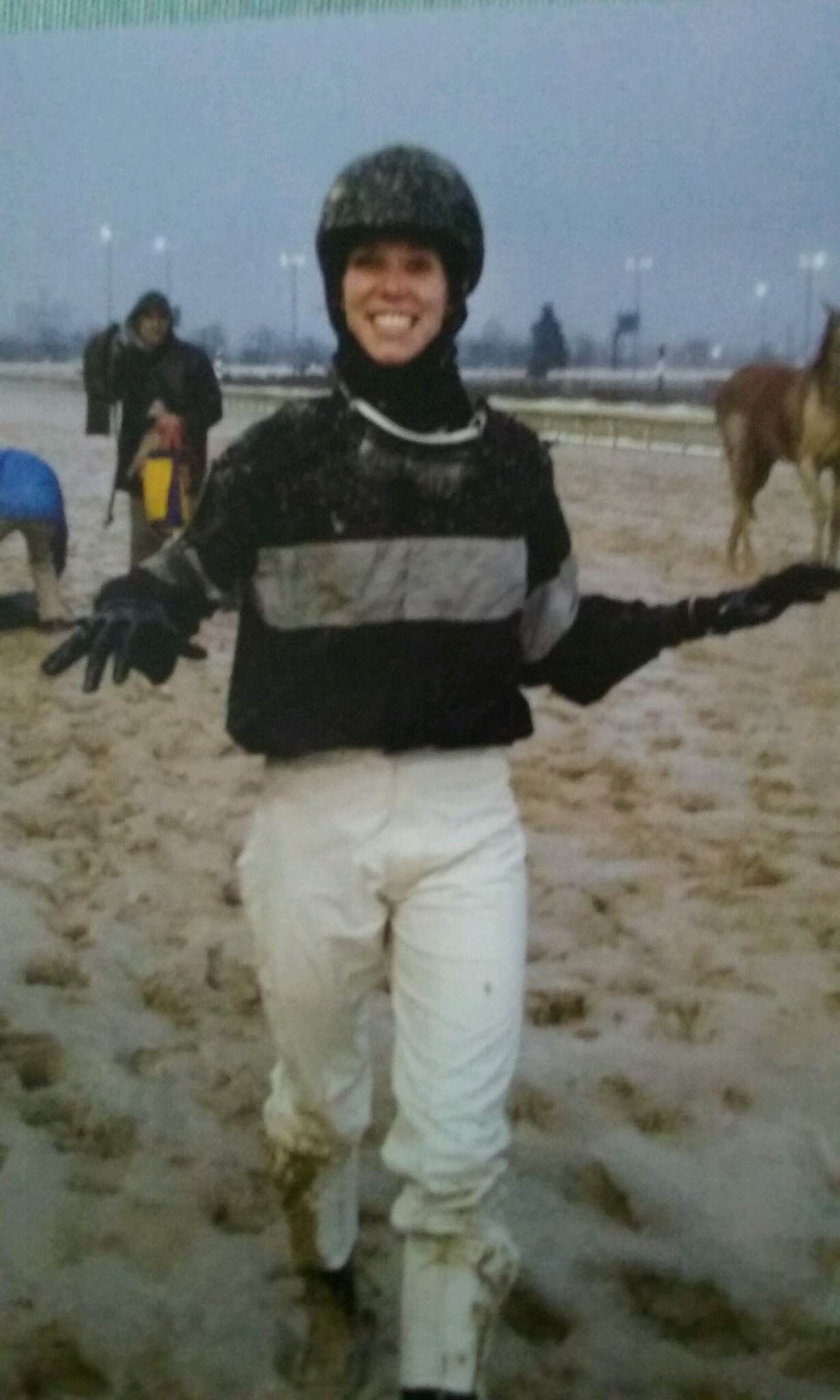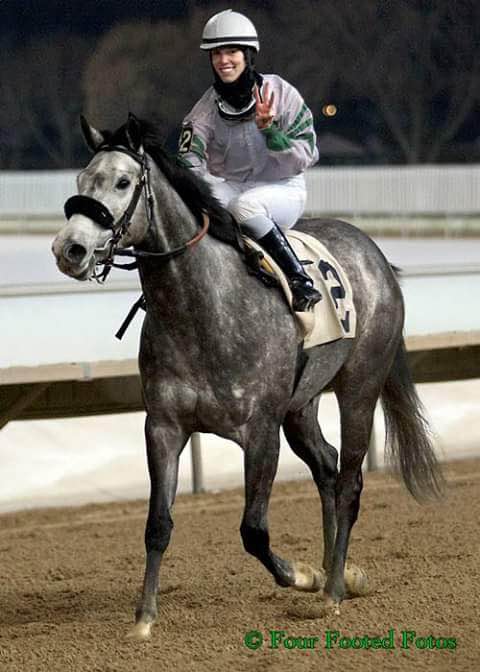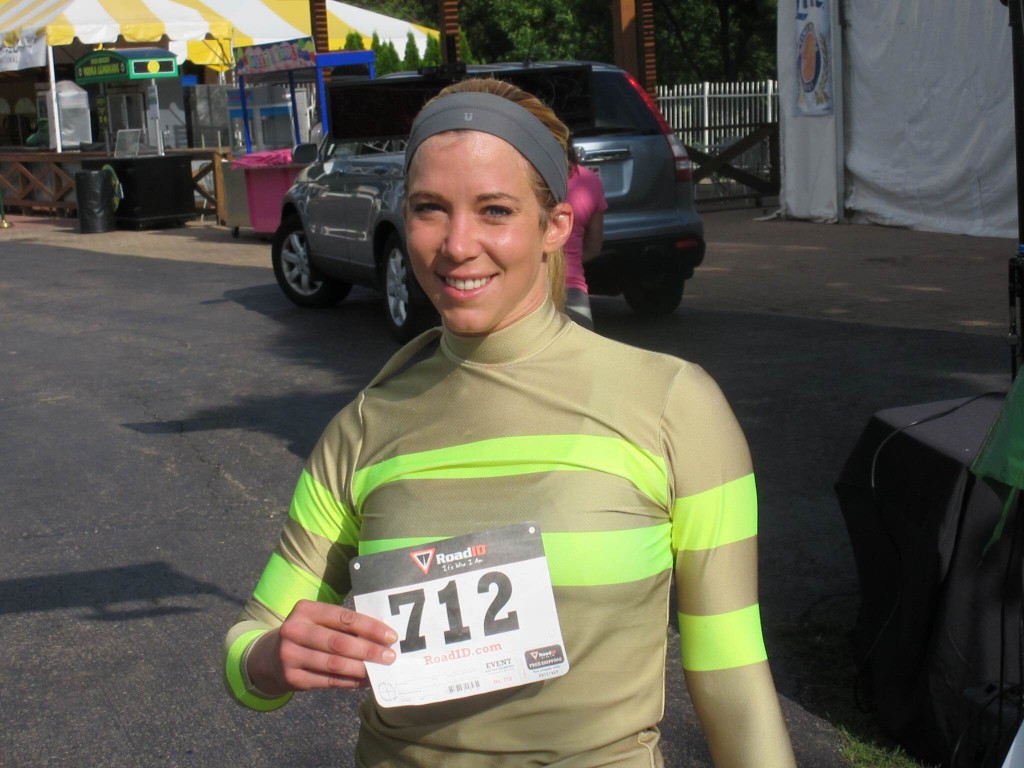Part I: Kieren Fallon and Depression in Irish Jockeys

Kieren Fallon
When six-time British champion jockey Kieren Fallon retired from race riding due to depression last month, the racing community was predictably tight-lipped on the subject.
There were articles written praising the career of the Irishman who won 2,253 races around the world — he captured the 2,000 Guineas five times, the Epsom Derby and Oaks three times each, the Prix de l’Arc de Triomphe twice, and the Arlington Million, along with numerous other major stakes wins.
And although each article mentioned that his retirement was due to “profound depression,” few missives failed to broach the subject at hand — namely, that there is a high incidence of depression in jockeys worldwide.
It seems as if the turf writers subscribe to the same theory that horsemen adhere to: simply not talking about the subject in hopes that it will “go away” is the best course of action.
But the doctor who personally treats Fallon is trying to change the age-old stigma associated with depression and similar mental illnesses.
“We know that a lot of elite athletes have depression. I commissioned a survey in racing last year (2015) and 49 percent of jockeys in Ireland actually had symptoms of depression,” stated Dr. Adrian McGoldrick, the Irish Turf Club chief medical officer.
“Kieren’s had quite significant depression ongoing for the best part of three years, which has gone undiagnosed in England and America,” added Dr. McGoldrick
When speaking of Fallon, Dr. McGoldrick was citing a work in progress, as the subsequent findings of his shocking study revealed that 57.1 percent of professional jockeys showed signs of depression. In the age group of 18-24, that figure reached 65.2 percent.

Since this survey was confined to Irish jockeys, it should be noted that, in the Irish population as a whole, only 28.4 percent of people between 18 and 24 years old suffered from major depression.
The findings are obvious: jockeys suffer from depression at an alarmingly higher rate than their non-jockey peers.
The findings prompted the governing body of horse racing in Ireland, Horse Racing Ireland, to institute a 24/7 phone hotline for jockeys, trainers or anyone else in the industry to seek help for mental issues, including anxiety and depression.
Named the Industry Assistance Programme, the initiative should become the standard-bearer for racing commissions worldwide.
The Professional Jockeys Association in England also has a similar resource for people in the industry to seek help for mental health problems.
But there are very few jockey-specific studies regarding the incidence of major depression, which is characterized as “a period of two weeks or longer during which there is either depressed mood or loss of interest or pleasure, and at least four other symptoms that reflect a change in functioning, such as problems with sleep, eating, energy, concentration, and self-image.”
Part II: The Dearth of Depression-Related Resources in American Racing
 In 2014, 15.7 million American adults (18 years old and up) had experienced at least one major depressive episode in the previous year, which equates to 6.7 percent of all adults.
In 2014, 15.7 million American adults (18 years old and up) had experienced at least one major depressive episode in the previous year, which equates to 6.7 percent of all adults.
If Dr. McGoldrick’s study of Irish jockeys correlated perfectly with those of American jockeys, it would be easy to surmise that hundreds of jockeys in America suffer from major depression.
But where do the people in American horse racing turn to for help with industry-specific mental illness? Today, the answer to that question is basically nowhere.
The culture of the racetrack backside dictates that jockeys suffering with depression don’t talk about it, as admitting to something perceived as a weakness will mean a certain reduction in the number and class of mounts they would otherwise receive.
Although there are exceptions — namely, the Delaware Jockeys Association and the Winners Foundation in California — for the most part, resources are scarce in regards to promoting mental well-being in American jockeys.
There are no easily-available studies pertaining to the mental health of the American jockey — and that needs to change.
The three most common factors that cause major depression in jockeys are:
1) Weight management/diet.
2) Dealing with major injuries.
3) Pressure to succeed in a very competitive environment.
It is highly unlikely that resources will instantly become available to jockeys suffering from depression. For that to happen, the culture of racing would have to change overnight. The stigma of mental illness is too deeply-ingrained to spontaneously fall by the wayside.
Short of a complete paradigm shift in the attitudes of those who spend most of their time at the racetrack, the next-least-likely solution to the problem is having a national racing commission that dedicates resources to aiding those with mental illnesses.
Many prominent racing figures have been proponents for a national racing commission for a long time. However, the adoption of such a national commission is nothing but a pipe dream, as very few sitting local commissions seem eager to give up their current powers and business models for the betterment of American racing as a whole.
 There are two entities that could join forces to become an impetus of change in regard to the perception of depression and mental illness in American jockeys: the jockeys themselves, through the Jockeys’ Guild, and the turf writers, who cover said jockeys.
There are two entities that could join forces to become an impetus of change in regard to the perception of depression and mental illness in American jockeys: the jockeys themselves, through the Jockeys’ Guild, and the turf writers, who cover said jockeys.
The Jockeys’ Guild consists of roughly 1,270 of the estimated 1,500 jockeys in America. Recently, the Jockeys’ Guild has instituted a three-year study into concussions in jockeys, which is a positive step in understanding the physical well-being of those who ride horses competitively for a living.
The Jockeys’ Guild could do the same for depression that it is doing for concussions. The Jockeys’ Guild could be the torch-bearer for changing the culture associated with the stigma against mental illness in the industry.
In conjunction with the jockeys, the people who cover thoroughbred racing in America could help bring awareness to the problem at hand. Jockeys are, by nature, brave individuals. Imagine if some could open up, without the fear of being chastised or facing financial ruin by being honest with those who can help spread their unique stories over various media. It could be therapeutic to the jockeys in question and to the industry as a whole.
Something has to be done. Kieren Fallon isn’t the only jockey to retire because of depression… he’s just one of the few who will admit it.
Part III: The Case of Stephanie Slinger
Watching the 1995 Kentucky Derby on television from her family’s suburban Detroit home, eight-year-old Stephanie Slinger found her passion. As jockey Gary Stevens urged 24-1 longshot Thunder Gulch to the wire ahead of eighteen other Derby hopefuls, Slinger knew that she wanted to be a jockey and one day make her own “run for the roses.”
 In the fall of 2005, she headed to Kentucky, set to fulfill her dream. With the experience of breaking young horses in Michigan in her back pocket, she readily found trainers that would let her ride for them.
In the fall of 2005, she headed to Kentucky, set to fulfill her dream. With the experience of breaking young horses in Michigan in her back pocket, she readily found trainers that would let her ride for them.

Stephanie Slinger
Slinger rode in the morning for some of the best trainers America (and the world) had to offer, folks like Bobby Frankel, D. Wayne Lukas, Michael Maker, Steve Asmussen, Ken McPeek and, for a while, Juddmonte Farms.
Riding horses such as Groupie Doll, Wise Dan and Asi Siempre early on helped her fledgling career tremendously.
She experienced her racing debut on the very track she watched Gary Stevens pilot Thunder Gulch home fourteen years prior under the lights at Churchill Downs on July 2, 2009.
Also riding a chestnut horse and wearing the same color silks that Stevens did on that first Saturday in May in 1995, an admittedly nervous Slinger finished seventh aboard Pish Posh in the second race of the evening before 26,000 screaming fans.
Her first win came in her thirteenth try, aboard Table for Five in the sixth race at Ellis Park on Aug. 22 of that same year.
Like all jockeys that win their first career race, Slinger was initiated into the ranks of jockey colony winners by being doused with water, baby powder, eggs, ketchup and anything else that could be smeared on her.
Her career was underway and all looked bright.
Although she had been thrown from horses and significantly injured many times before her first career win, she wasn’t prepared for her first major injury as a professional jockey.
Training a 2-year-old filly at Keeneland, the young, inexperienced horse tripped over its own legs and threw Slinger, who “landed like a lawn dart,” on her face, fracturing her jaw and an orbital bone (eye socket).
The road to recovery was long and Slinger made a very mature decision at 23 years of age — she needed more experience riding if she were to become a better jockey.
She could have kept race riding, but she wanted to gain valuable experience as well as get physically stronger. Maintaining race weight had become hard for her, yet she knew it was of the utmost importance.
When she was ready for her return two years later, Slinger won relatively quickly on Dec. 27, 2012 in the fourth race at Hawthorne Race Course aboard Featherinthebreeze, a horse she helped break as a youngster.
Keeping the requisite weight and the diet that came along with it was difficult, but Slinger learned quickly that she needed to just do it and keep her mouth shut.
As a female jockey, many owners and trainers already doubted her strength and aggressiveness and she did not want to be a complainer on top of it.
It was the culture.
Slinger found a niche on the Chicago circuit and had her best two years in 2013 and 2014. By Dec. 31, 2014, she had raced 1,095 times, amassing 84 wins, while hitting the board (finishing third or netter) 291 times (27 percent).
She wasn’t expecting her next race to be her last.
On New Year’s Day 2015, Slinger entered the Hawthorne gate with Try A Lemon Drop to start the fifth race. The horse crumpled as the gate opened and Slinger was vaulted over its head, hitting the ground.

Stephanie Slinger after winning her third race of the day at Hawthorne Race Course (photo via Four Footed Fotos).
Try A Lemon Drop took a panicked step forward… right on top of her.
Her laundry list of injuries from this spill included broken ribs, fractured vertebrae, a rotator cuff injury and a concussion.
“When I woke up in the hospital, I knew that was it,” said Slinger. “Because I was going to have the time off and I was struggling drastically with the weight, I knew that I was done.”
At this point in her riding career, she had fractured every rib on both sides of her chest, most of them multiple times. She had the aforementioned orbital bone and jaw fractures. She also suffered a broken wrist, both collar bones had been fractured and she had suffered multiple skull fractures.
She was in a car accident in 2006 that left her with a significant traumatic brain injury, requiring her to re-learn how to read and write. By 2015, the now 28-year-old Slinger had been through a lot.
She doesn’t know exactly when she became depressed, but suspects it was an underlying factor throughout her adult life. She began independently taking anti-depression medication near the end of her career.
“I didn’t really understand the depression until I got injured the last time,” explained Slinger.
“As far as I’m aware there is nowhere — it doesn’t exist,” she said when asked where she and other jockeys go for help with their depression.
“You don’t speak about it. You don’t cry… you can’t cry,” Slinger said.
But the prospects of coming back from another long-term injury, being unable to maintain her optimal weight and not being able to make a living by racing put her in a tailspin. She felt her Kentucky Derby dream was dead.
“When I knew it was really over, I went through a really bad time. I was on a lot of medication for depression, I was still hurting. I was drinking too much,” said Slinger.
In late November of 2015, Slinger left a suicide note on her Facebook profile page. It was not a cry-for-help post, but, rather, a very sincere apology and goodbye to her family and friends.
“I gave up. I said, ‘I can’t do this anymore’ one day and went into the closet with a dog leash and tried to hang myself,” Slinger said.
She was found by her ex-husband and taken to a local hospital. She was alive and had to deal with the gravity of her situation.
Part IV: Stephanie Slinger Down, But Not Out
Emerging from her darkest hour, Stephanie Slinger’s story has a happy ending. Although her race riding career is currently in the past, she’ll tell you “never say never” when asked if she may someday return to the jockey ranks.
The reaction from people on her Facebook profile in the wake of her suicide attempt “brought me to tears, because there was so much bullshit and gossip about me — all I heard about myself was negative… all the time,” Slinger explained.
“I might have always had problems that I never realized, but I was using horse racing as a crutch. I was so dependent on it that when I knew I wasn’t going to get my Derby, it crushed me. And I was so paranoid — I thought everyone hated me,” she said.
Knowing that there were people who cared for her and wished her well was a revelation for Slinger.
“Nobody [in the industry] wants to be associated with the person who did something like this. They want to pretend like it never happened,” she surmised.

Stephanie Slinger after completing the Arlington Park 5K to benefit the Permanently Disabled Jockey Fund.
But Slinger is still an active exercise rider, training and galloping horses for trainer Jan Ely, currently at Arlington Park.
She plans on riding for other trainers on a more regular basis as well.
Slinger is heavily involved the Permanently Disabled Jockey Fund and recently ran in the Arlington Park 5K to benefit the PDJF. She has seen riders become paralyzed after a spill and knows how fleeting a jockey’s career can be.
She is also employed by Galloping Out, which is a Thoroughbred retirement program that does rescue work — finding new homes for off-track thoroughbreds and re-training horses to keep them fit while they are searching for new homes.
Slinger does the physical training, riding the horses while they learn new tactics and tricks and trying to keep them more “quiet” in their movements. She makes sure the horses are able to be ridden by non-jockeys.
Her experience in breaking horses made her a natural fit for the organization.
She also works for Four Footed Fotos, the equine photography vendor for tracks such as Arlington Park and Hawthorne Race Course.
Slinger is learning to take racing photos, while also doing the desk work, keeping records and providing customer service.
One of her first-ever photos was published on the Blood Horse Web site.
Slinger says that she is happier than she’s ever been and truly enjoys being around the racetrack in different capacities.
“I belong to the industry,” Slinger says.




